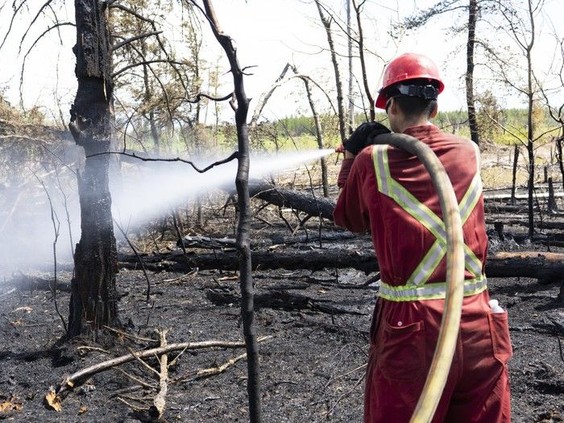
“Regardless of what Mother Nature brings, we are prepared and ready for anything,” said SPSA executive director of land operations Bryan Chartrand.
Angela Amato
Regina Leader-Post
While the Saskatchewan Public Safety Agency (SPSA) reports only two active wildfires as of Tuesday, fire crews are preparing for more as warmer, drier and windier conditions are expected in the coming days.
An active wildfire near Lepp Lake, approximately 66 kilometres east of Pelican Narrows, was caused by lightning on May 9 and reached 15,819 hectares in size, equating to over 6,400 football fields.
Although the fire is technically still categorized as “active,” crews haven’t seen any fire activity in the zone for “multiple days,” said SPSA executive director of land operations Bryan Chartrand.
“It’s under ‘ongoing assessment,’ which means we are still monitoring this fire through aircraft or personnel in the area,” Chartrand said in an interview Tuesday. “There’s potential for them to get active again so we continue to monitor them for some time, even though they look like they are no longer burning.”
The second “active” wildfire is located west of Cumberland House, and reached 9,698 hectares in size. Chartrand said the agency is also monitoring that fire, which was human-caused on May 11, but hasn’t seen activity for a number of days.
“It’s only June, temperatures are only going to get warmer, especially near the end of the month and into July,” he said. “Regardless of what Mother Nature brings, we are prepared and ready for anything, whether it’s floods or wildfires.”
Environment Canada is forecasting that many parts of the province will reach highs above 25 C by the weekend and into next week.
Chartrand said the SPSA monitors weather patterns daily to anticipate potential hot spots, as well as storms to determine where lightning has struck.
While tens of thousands of hectares have already burned in Saskatchewan, Chartrand says they’ve been able to tackle the larger blazes using Type 1 and Type 2 firefighters on the ground, as well as aircraft like helicopters and air tankers.
Type 1 fire crews typically carry out initial and sustained attacks on fires and provide assistance to communities responding to flooding. Type 2 crews work on the ground and are contracted to work with First Nations and northern communities located near or within commercial forests.
Crews prioritize fires when human life, communities, valuable infrastructure or industry are at risk, noted Chartrand. Fires in the bush where there is little to no risk to human life may be left to monitoring if there are others that pose more danger to the public and there is limited personnel.
“(In some cases) we would mark some of our active fires as ‘ongoing assessment,’ so we will continue to watch them, watch how big they’re getting, and where they’re going,” said Chartrand, adding they also seek opportunities for indirect attacks like steering the fire to a lake so it runs out of fuel and extinguishes naturally.
On Friday, the SPSA sent 21 crew members up to the Northwest Territories to help battle a blaze near Hay River. The province also loaned “1,000 lengths” of hose to Manitoba approximately two weeks ago.
AnAmato@Postmedia.com
